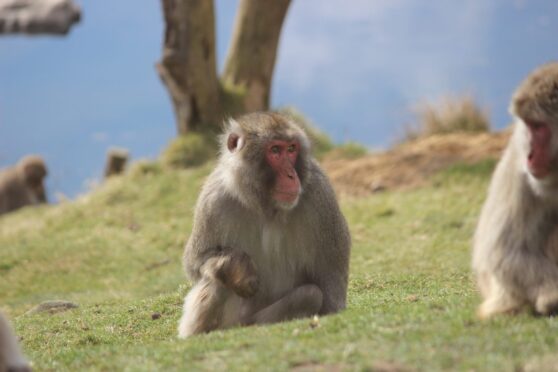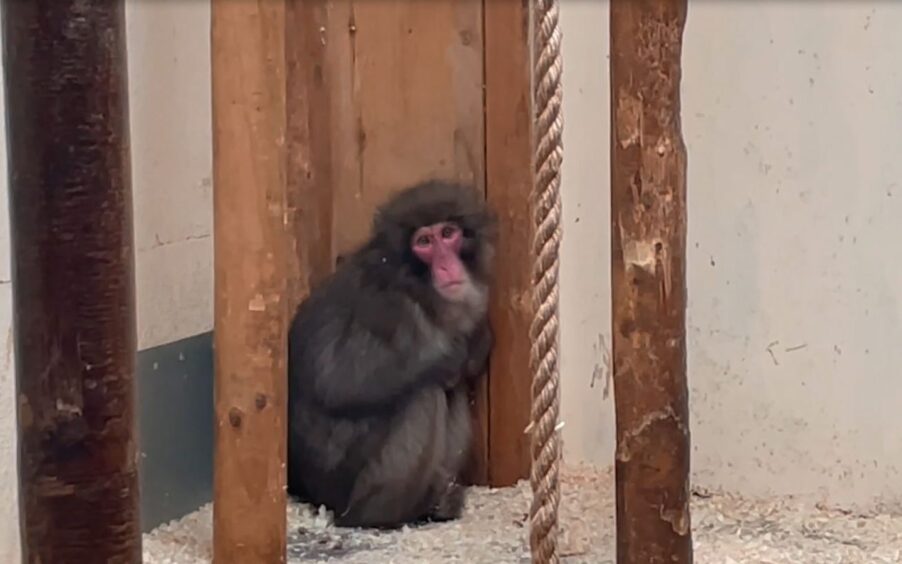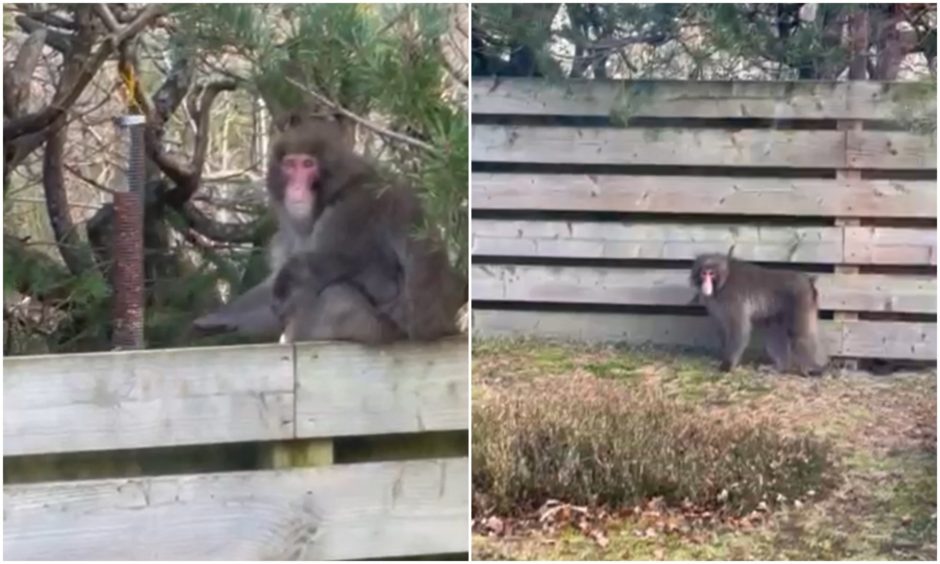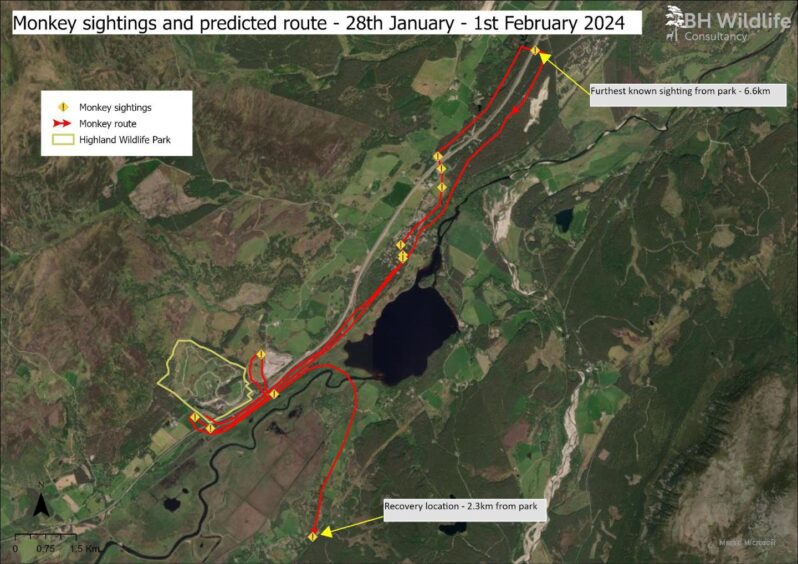Honshu, the famous escapee monkey, will start a new life at Edinburgh Zoo today after he caused “too much trouble” to be accepted back by his old troop.
The seven-year-old Japanese macaque – who captured headlines around the world when he went on the run through the Highlands – is being transferred to Scotland’s capital today.
He will be making the journey with the three other male monkeys he has been living with since he was caught.
Honshu fled the Highland Wildlife Park at Kincraig on January 28 and was not captured until five days later in Insh, six miles away.
During a visit to the park yesterday, Keith Gilchrist – living collections operations manager – told The P&J that the snow monkey was never re-introduced to the group of 36 macaques he had been living with before.
He said: “We’ve kept him in a separate space because he would have never been accepted by his troop as he caused too much trouble.
“Because monkeys are social species, we put three other adult males with him in the hope those four would bond and a hierarchy would be created.”
Final preparations being made for Honshu’s journey south
Mr Gilchrist told the P&J that Honshu is being transferred to Edinburgh Zoo today with the three other male macaques he was placed with after his escape.
They will be the first Japanese snow monkeys at the capital’s zoo.
He said: “They are getting along very well – they’ve formed a nice little group.
“Ken, Katana and Kirran were also part of the main group and are one or two years younger than Honshu, who will likely take control of the troop.”
After arriving at Edinburgh Zoo, the macaques will be kept off-show for several days, as is normal practice when acclimatising animals to their new surroundings.
Why did Honshu escape from the Highland Wildlife Park?
Mr Gilchrist still believes that Honshu escaped due to “high tensions within the group” during the breeding season.
He said: “The two dominant male macaques in the troop, who are also the oldest ones, severely punish any male that they think is infringing on their breeding rights.
“Rather than getting into a fight that he would probably lose, he decided to get out of the enclosure and managed to jump over the fence.”
The animal expert, who has worked in zoos and sanctuaries in Thailand, America and Scotland, described the search for Honshu as one of the strangest experiences of his career.
“I definitely didn’t expect to be hunting a Japanese macaque through the Scottish Highlands for a week,” he said.
Mr Gilchrist explained that there was a point Honshu almost came back to the park, showing up one day in the field behind the monkeys’ enclosure.
“He was probably wanting to come back because he would have been hungry and missed the rest of the group,” he said.
“But for whatever reason he just didn’t make that final step.”
The keeper admitted it was a very “long week” as they tried to capture him.
He said: “I was concerned that he would disappear, get hit by a car or cause a traffic accident on the A9.”
Honshu’s world-famous escape
Honshu’s escape from the Highland Wildlife Park turned the Japanese macaque into an international celebrity.
Neighbours in Kincraig, near Aviemore, were shocked when they saw Honshu casually walking around the village just hours after his escape.
One resident, Carl Nagle, told The P&J he woke up that morning to his daughter screaming: “Dad! There’s a monkey on the street!”
Several teams from the park scoured the countryside for five days to capture Honshu, using drone and thermal imaging cameras to increase their chances.
The sneaky creature was finally captured on the morning of February 1, after Insh residents Stephanie and Howard Bunyan discovered the monkey in her back garden.
Mr Bunyan told The P&J that they believed the reason the animal had turned up in their garden was a Yorkshire pudding they had left outside.
Keepers arrived at the couple’s home within minutes and finally managed to recapture Honshu, who was taken back to the park.



